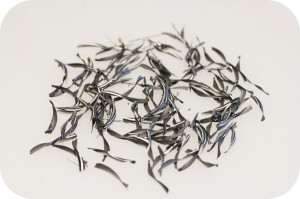 The Vortex technology belongs to the ambit of cam applications specifically oriented to roughing operations of hard materials, with the double goal of granting the machining and of optimizing the tool use.
The Vortex technology belongs to the ambit of cam applications specifically oriented to roughing operations of hard materials, with the double goal of granting the machining and of optimizing the tool use.
Vortex technology, result of a research carried out by Delcam and tested in its in-house workshop, has the primary goal of drastically reducing times in roughing operations, where the qualitative levels that characterize finishing machining are not requested, while a correct matching of tools, technological parameters and cutting paths can significantly contribute in decreasing the times at stake.
The question becomes even more relevant when we have to deal with very hard materials, for whose machining Vortex functions become almost indispensable.
Paths for an optimal engagement angle
How to obtain a constant engagement angle while machining? The answer by Vortex consists in a software approach that, when dealing with a roughing operation, provides for the transformation of the theoretical path through a strategy that, identifying the critical points of the nominal path, varies it in correspondence of such points, in order to maintain the tool engagement angle as constant as possible and then to avoid the stresses to which, vice versa, it would be subjected following the nominal path.
Vortex functions outline an advantageous strategy in roughing machining or re-roughing operations on 3D surfaces and solids, when carbide tools are used, the only ones that can attack rough pieces of very though metal, like titanium and hardened steel.
Unlike the solutions that provide for machining with constant volume stock removal, through the adjustment of technological parameters, Vortex manages the machining in such a way as to maintain a constant engagement angle, as suggested by tool suppliers to exploit its potentialities at best.
When during a roughing cycle we meet critical zones, the consequent changes of the engagement angle become demanding for the tool and the machine. With Vortex, on the contrary, we do not change the machining parameters, as usual, but the tool path, which software algorithms configure in a trochoidal trajectory, whose points are controlled with the aim of keeping the engagement angle fixed. The tool, constantly subjected to uniform stress, is less stressed and then less subjected to damaging wear phenomena, which might derive from the high temperatures involved in roughing operations.
The path changes carried out by Vortex make this solution preferred in roughing cases where trajectories, unlike finishing, are not strictly bound to the shape of the finished piece.
In a closed slot
It we imagine to operate in a closed slot, the tool acts in its inside gradually opening the way, then it starts the stock removal through lateral passes that follow rotary movements, thus avoiding dangerous frontal stock removal operations and consequent tool overloads.
Keeping the axial pitch in Z and the feed value unchanged, the lateral pitch gradient, within the values suggested by the tool supplier, is entrusted with the task of keeping constant the cutting edge engagement, the removed volume and then the load on the tool.
A constant engagement angle is assured by Vortex algorithms, which provide for calculating the correct shape of the trochoidal orbiting in critical zones, managing the lateral pitch in such a way as to use the whole available pitch in Z.
The absence of overload, thanks to the constant engagement angle, favours a homogeneous machining temperature, with consequent reduction of thermal shocks on the coating surface of the tool, of which is reduced the wear and extended the life.
If machining hard materials with conventional methods means adopting small pitches in Z and exploiting the whole tool diameter, with Vortex it is possible to exploit a high engagement in Z and a controlled lateral pitch.
Chip shape and sound in the removal process differentiate a traditional machining from the one performed with Vortex, where a constant sound and a regular chip shape witness the process homogeneity.
Besides, the higher chip lightness favours its ejection, with clear advantages in the machining of slots, where the chip disposal is more difficult and its presence would involve higher cutter engagement.
Vortex algorithms have been directly implemented by Delcam and therefore they follow the regular upgrades provided for Cam software, without indirect burdens. Vortex technology can be synergistically used with the Machine DNA developed by the same software house, with the aim of optimising the machining not only through the revision of the path through Vortex strategy, but also keeping into account the characteristics of the machine tool on which the machining is carried out.









